Департамент образования мэрии города Новосибирска
Дворец творчества детей и учащейся молодежи «Юниор»
Городской конкурс исследовательских проектов
младших школьников «Мое первое открытие»
Секция Английский язык
ИССЛЕДОВАТЕЛЬСКАЯ РАБОТА
по английскому языку
Сравнительный анализ стихотворения “Rock A Bye Baby”
и его поэтических переводов на русский язык
(на материале произведений О. Седаковой и С.Я. Маршака)
Автор: Гладун Алина,4 В класс
МБОУ «гимназия 4»
Центральный округ города Новосибирска
Новосибирск 2021
|
|
|
| |
| CONTENTS
|
| ||
| INTRODUCTION………………………………………………………………. | 3 | ||
| CHAPTER 1. LITERARY AND COMPARATIVE ANALYSIS OF THE POEM AT SCHOOL……………………………………………………………. | 5 | ||
| CHAPTER 2. LITERARY AND COMPARATIVE ANALYSIS OF THE POEMS «ROCK A BYE BABY», «БАЮШКИ НА ЕЛИ МАЛЬЧИК ЗАСЫПАЕТ» BY O.SEDAKOVA AND «БАЮ БАЮ ДЕТКИ» BY S.Y. MARSHAK…………... | 6 | ||
| 2.1. Literary analysis of the English poem «Rock a bye baby»…………………. | 7 | ||
| 2.2. Comparative analysis of the poems «Rock a bye baby» and «Баюшки на ели мальчик засыпает » by O. Sedakova……………………………………………………… | 7 | ||
| 2.3. Comparative analysis of the poems «Rock a bye baby» and «Баю баю детки» by S.Y. Marshak………………………………………………………... | 8 | ||
| CHAPTER 3. O.SEDAKOVA AND S.Y. MARSHAK - MASTERS OF TRANSLATION OF ENGLISH CHILDREN’S POETRY FROM ENGLISH INTO RUSSIAN………………………………………………………………… | 9 | ||
| CONCLUSION…………………………………………………………………. | 10 | ||
| REFERENCE LITERATURE…………………………………………………... | 12 | ||
| APPENDIX 1. Texts of the poem «Rock a bye baby» and its translations……. | 15 | ||
| APPENDIX 2. Results of comparative analysis of the poem «Rock a bye baby» and its translations by O.Sedakova and S.Y. Marshakа (3 tables).. | 16 | ||
| APPENDIX 3. A shorter dictionary of used literary terms……………………... | 18 | ||
| APPENDIX 4. Crossword on the topic: “Comparative analysis of the poem “Rock a bye baby” and its poetic translations into Russian (based on the works by O.Sedakova, S.Y. Marshak)»……………………………………. | 23 | ||
|
|
| ||
INTRODUCTION
Knowledge of English helps to learn culture, history and traditions of English speaking countries. It is important to read the original texts and translate them right. It is useful to compare the content and form of English fiction literature and its translation into Russian.
Children from our country know works of English folklore. Some of them were translated into Russian by O.Sedakova and S.Y. Marshak. In England these works were printed in collection «Nursery Rhymes from Mother Goose», or «Mother Goose Rhymes» («Mother Goose Songs») in 1760. Now this book is published every year all around the world. Poetic translations by S.Y. Marshak and O.Sedakova are not literal translations. Every poet created his own original works based on English folklore. We were interested in comparison of some poems from collection «Nursery Rhymes from Mother Goose» with its translation into Russian.
Comparative analysis of original texts and translations is little learnt. The students don’t know the methods of translation. This work may be useful for students learning English.
The topicality of the work: students should know how to compare the texts in original English with their Russian translation and learn the methods of translation.
The object is the content and the form of the poem «Rock- a bye-baby» and its poetic translations.
The subject is similarity and difference of the content and form of poem « Rock- a bye-baby » and its poetic translations.
The aims of the research are:
-
to learn how to analyze the form and the content of the poem;
-
to identify the similarity and the difference of Russian translations of «Баю баю детки» and « Баюшки, на ели мальчик засыпает»;
-
to study the methods of translations;
-
to read English children's literature.
Objectives:
-
to select an English poem and its translation into Russian;
-
to analyze the content and the form of the original English version and its translations;
-
to compare the content and form of the poems.
The main methods of research are literary analysis of the poem, comparative analysis of the original poem and its translations.
The material of the research (texts under study) is three poems:
-
«Rock- a bye-baby” – English folk children’s song from collection «Nursery Rhymes from Mother Goose»,
-
« Баюшки, на ели мальчик засыпает» by O.Sedakova,
-
« Баю-баю детки» by S.Y. Marshak.
After reading an English poem and its translation some questions appeared – what translation is more precisely? Are they different from each other? What are the similarities?
Hypothesis: poem “Rock- a bye-baby”” and translations by O.Sedakova and S.Y. Marshak have similarities and differences of the content and the form.
The product of the research – the crossword (see Appendix 4) on topic: «Comparative analysis of the poem “Rock- a bye-baby”” and its poetic translations into Russian (based on the works by O.Sedakova and S.Y. Marshak)».
The research has a practical significance. Crossword and presentation can be used in English and literature classes.
The research contains materials on comparative analysis of the content and form of an English poem “Rock- a bye-baby and its poetic translations by S.Y. Marshak and O.Sedakova. Some differences and similarities were determined.
The research was arranged from January to December 2020.
CHAPTER 1. LITERARY AND COMPARATIVE ANALYSIS OF THE POEM AT SCHOOL
Students study literature at school. They look through a content and a form of the work. Content is something the writer want to tell. In his work the writer expresses his feelings and thoughts. He uses art devices: events, faces, composition, genre, means of expression etc. Art devices are the form of the work. Poetic work has a special form. Literary analysis is a study of content and form of literature work. Analysis can be full or not full. Literary analysis – is a study of :
- topic and main idea;
- plot;
- characters;
- composition;
- means of expression;
- genre of the work;
- attitude of a reader
Poetic form - metre, rhythm, parts of the text - is learned in poems.
School students can analyze the literature of English speaking countries at English classes. This will help to learn English better. Foreign literature is translated by writers-translators. School students can compare the content and the form of the text in English and its comparison in Russian.
This is a comparative analysis of fiction literature. It helps to find a similarity and difference of content and form of original and translation. English poem “Rock a bye baby” and its translations (see Appendix 1) were compared in my research (poem «Баюшки, на ели мальчик засыпает » by O.Sedakova and « Баю-баю, детки » by S.Y. Marshak) (see Appendix 2)
CHAPTER 2. LITERARY AND COMPARATIVE ANALYSIS OF POEMS «Rock-a bye baby», «Баюшки, на ели мальчик засыпает» by O.Sedakova and Баю-баю детки» by S.Y. Marshak
2.1. Literary analysis of English poem « Rock-a bye baby »
Rock-a bye baby, on the tree top
When the wind blows, the cradle will rock;
When the bough breaks the cradle will fall
Down will come baby, cradle, and all.
Text of our translation of the poem «Rock-a bye baby»:
Баю-бай, малыш, на верхушке дерева.
Когда подует ветер, колыбель качнется;
Когда ветка сломается, колыбель упадет,
Упадет и малыш, и колыбель, и всё.
«Nursery Rhymes from Mother Goose» (or «Mother Goose Rhymes») is the most famous book for children in English speaking countries. It contains a lot of poems, songs, proverbs, riddles. They were created by English folk. Some of songs and poems were created in 16-17 centuries for adults, but later they were told to the children. First who collected them all was John Newbury in 1760 in England. Mother Goose is a character from tales of Charles Pierrot from France, a women story teller herding geese in old times. The poem « Rock- a bye-baby » was included to this folklore collection. It is considered that this poem is about Henry the VIII. This English king took away the grounds from church in 16 century.
The children’s poem « Rock- a bye-baby » is interesting to sing. This melody is good for listening.
The poem has no title. It consists of 4 lines There is an introduction, main part and conclusion. An introduction is the first verse (line 1). Here we can see the topic of the work. The main part of the poem is the second and third lines. The second line shows (line 2) what will happen if the wind blows. The third line (line 3) shows what will happen if the tree breaks. The repetition of words and sentences is means of expression. It shows author`s fear. The fourth line (line 4) is a conclusion. The last line shows the process of sleeping, otherwise trouble will happen. A contrast is used in the poem.
The poem’s metre is choree, that’s why the poem is read fast and dynamic. Nearby lines create the rhythm in this poem.
2.2. Comparative analysis of the poems «Rock-a bye baby » by O.Sedakova «Баюшки, на ели мальчик засыпает».
Баюшки, на ели мальчик засыпает,
А подует ветер – люльку раскачает,
Ветка обломилась, полетела колыбель –
Падает и люлька, и дитя, и ель.
O.Sedakova translated English poem «Rock the bye baby» in Russian. She named her translation «Баюшки, на ели мальчик засыпает». О.Sedakova included this poem in her book about little children.
O. Sedakova 1949 is a wonderful children’s poet, story teller and translator. Маny children and adults in our country know wonderful translations.
O. Sedakova, in our opinion, translated this song more poetically, due to a more melodious rhythm and longer - as it were song.
She kept the topic and main idea of «Rock a bye baby» poem. The composition of the poem was not changed. There are 4 lines in it. The introduction and main part are connected in 1 and 2 lines. Repetition of words (полетела) are the same as in the original.
The author likes kids, plays with them, brings them up. She teaches to be polite and listen to mother.
Dozens of her books and collections of poetry have been published in France, Sweden, Germany, Denmark, Italy. She has done many translations of European fiction, philosophical and theological articles.
2.3. Comparative analysis of the poems «Rock a bye baby» and «Баю баю детки» by S.Y. Marshak
Баю-баю, детки
На еловой ветке.
Тронет ветер вашу ель –
Закачает колыбель,
А подует во весь дух –
Колыбель на землю бух.
S.Y. Marshak (1887 - 1964) created many works for children, for example, «Koshkin dom», «Terem-teremok», «Dvennatsat mesyatsev» and others. The poet liked to translate poems since childhood. Marshak lived and studied for several years in England, traveled there a lot, learnt English folklore. S.Y. Marshak translated many English folk songs for children from book «Nursery Rhymes from Mother Goose». His translations look like English and Russian folk works. Original and translated poems by S.Y. Marshak are the most favorite children’s literature.
S.Y. Marshak also kept the topic and main idea of «Rock a bye baby» poem. The composition of the poem was not changed. There are 6 lines in it. The introduction and main part are connected in first four lines. Repetition of words are used here. He expanded lines in the poem.
In his translation Marshak tries to preserve the figurative system of the original, strengthen it with diminutive suffixes and rhythmic pattern. He tries to be close to Russian folk song. Russian reader can feel the poetic charm of this song
CHAPTER 3. O.SEDAKOVA AND S.Y. MARSHAK - MASTERS OF ENGLISH CHILDREN’S POETRY TRANSLATION
O.Sedakova and S.Y. Marshak were wonderful translators of English literature in Russian. They created books and articles about translation, own poems in Russian, poetic translations of English poems. Poets knew Russian and English languages and literature very well. Translating O.Sedakova and S.Y. Marshak created new poetic texts, kept the main content and poetic form of original poem, considering it from 3 sides: what is told (topic, main idea), the way is told (expressive means and form), reaction of the reader to what he has read.
The important points of the original should be kept in translation. Marshak wrote that the translator should keep the character of the original poet, his time and nationality. In the translations of English children’s songs humor and history of English folk were kept. Translations by O.Sedakova and S.Y. Marshak have the same topic and main idea of the poem «Rock a bye baby». These poems educate children. Both poets kept the means of expression of the original: contrast, hyperbole, irony, the repetitions of words and sentences, main poem’s metre (choree) and paired rhythm. There are 3 parts in all these poems: introduction, main part, conclusion. Every translator uses his own expressive means, many poets explains the original in a different way as well as O.Sedakova and S.Y. Marshak translated “Rock a bye baby” poem.
However it is interesting that all three poetic translations are similar in one thing: all four original English lines of rhyme are with a masculine rhyme (emphasis on the last syllable). In Russian translations the 1st and 2nd lines are a masculine rhyme, but in 3d and 4th (in Marshak's 3) rhyme becomes feminine, more tender and, thus, more suitable for lullaby ending.
The story of its origin is interesting. American folklorists suggest that it was written by a young man who arrived in America with the first settlers on the Mayflower ship. The story was influenced by the custom of Indians to hang a cradle made of bark from a tree branch. It is interesting that in Russian translations this tree is invariably spruce, although the species of the tree is not specified in the original.
CONCLUSION
Knowledge of English helps to learn the culture, history and traditions of English-speaking countries. It is important to learn how to read the original texts and translate them right. It is useful to compare the content and form of English literature and its translation into Russian, that shows the relevance of the work.
The material of the research is three poems (see Appendix 1):
-
Rock-a bye -baby” – an English folk children’s song from the «Mother Goose Rhymes» («Mother Goose songs»),
-
«Баюшки, на ели мальчик засыпает» by O.Sedakova,
-
«Баю баю детки» by S.Y. Marshak.
The research proves that hypothesis is right: the poem “Rock-a bye-baby” and translations by O.Sedakova and S.Y. Marshak have similarity and difference of the content and form (see Appendix 2).
The aims were reached:
-
literary and comparative analysis of the poems is provided;
-
similarity and difference of the poems ”Rock-a bye-baby”, «Баюшки, на ели мальчик засыпает» and «Баю баю детки» is identified;
-
the methods of translation were studied;
-
English children’s literature was learnt.
The following methods of translation were used: literary analysis of the poem, comparative analysis of the original and the translation.
The tasks are solved:
-
an English poem and its translation into Russian was selected;
-
the content and the form of the original English version and its translations were analyzed;
-
the similarity and difference of content and form of the poems was found.
The products are album and crossword on the topic of the research:
The work has practical significance. The crossword (see Appendix 4) may be used in English and literature classes.
REFERENCE LITERATURE
1. Англо-русский словарь Мюллера [Электронный ресурс]. - URL: http://www. - dic.academic.ru›.
2. Англо-русский словарь с транскрипцией, произношением, примерами и упражнениями [Электронный ресурс]. - URL: http:// www.nordmine.ru.
3. Асфаганова, Р. А. Внеклассное мероприятие: С. Я. Маршак и детские английские стихи “Nursery Rhymes”// Иностранные языки в школе. - 2007.- № 4. – с.65 -70.
4. Английский мир детства: nursery rhymes [Электронный ресурс]. – URL: http://www.study.ru/support/lib/note224.html.
5. Аутлева, Ф.А. Лексико-семантические особенности переводов S.Y. Marshakа/ Ф.А. Аутлева [Электронный ресурс]. – URL: http://revolution.allbest.ru/languages/00273988_0.html.
6. Словарь английских синонимов [Электронный ресурс]. - URL: http://slovar-vocab.com/english/synonyms-vocab/mother-6406271.html.
7. Детская литература англоязычных стран: Учебно-методическое пособие для студентов и преподавателей пед.колледжей / Автор-составитель: Т. Ю. Егорова [Текст]. — Вологда: Издательский центр ВИРО, 2005. — 268 с.
8. Жанровая классификация детского фольклора [Электронный ресурс]. - URL: http://knowledge.allbest.ru/culture/.
9. Зенкова, А. Самуил Яковлевич Маршак и детские английские стихи «Nursery Rhymes»: Экспериментальная проектно-исследовательская работа [Электронный ресурс]. - URL: http://dogend.ru/docs/index-405516.html.
10. Казаков, Т. А. Практические основы перевода. English ↔ Russian. Учебное пособие/ Т.А.Казаков. - СПб.: Лениздат; Издательство “Союз”. 2002. - 320 с.
11. Канистратенко, А.Творческий перевод стихотворения «Робин - Бобин» с английского на русский язык [Электронный ресурс]. - URL: http://nsportal.ru/ap/library /literaturnoe-tvorchestvo/2013/04/24/tvorcheskiy-perevod-stikhotvoreniya-robin-bobin-s.
12. Капица, Ф. Русский детский фольклор: учебное пособие [Электронный ресурс]. - URL: https://profilib.com/chtenie/81083/fedor-kapitsa-russkiy-detskiy-folklor-uchebnoe-posobie.php.
13. Литературоведческие основы анализа художественного произведения в начальной школе [Электронный ресурс]. - URL: http://gigabaza.ru/doc/86223-p2.html.
14. Народная английская поэзия в переводах: сценарий открытого мероприятия [Электронный ресурс]. - URL: https://www.metod- kopilka.ru/scenariy_otkrytogo_meropriyatiya _quotnarodnaya_angliyskaya_poeziya_v_perevodah_rossiyskih-24494.htm.
15. Нурбекьян, Д. Н. Английская детская поэзия [Электронный ресурс]. - URL: http://mognovse.ru/gbu-anglijskaya-detskaya-poeziya.html.
16. Ожегов, С.И., Шведова Н.Ю. Толковый словарь русского языка. - М.: Азъ, 1992. - 955 с.
17. Павлов, М.Ю. English Rhymes for Children (Английские стихи для детей). - М., 1981. – 128 с.
18. План анализа стихотворения [Электронный ресурс]. - URL: http://mogggiiien .narod.ru/1kl/AnalizStihotvorenia.html.
19. Справочник литературных терминов [Электронный ресурс]. - URL: http://lit100.ru/ text.php?t=111.
20. Словарь литературоведческих терминов / Школьная литература [Электронный ресурс]. - URL: http:// litem.ru/podgotovka-k-ege/slovar.
21. Сопоставительный анализ стихотворений [Электронный ресурс]. - URL: http://irgali.narod.ru/files/olimpiada/analiz_teksta.htm.
22. Слонь, О. В. Анализ композиции лирического стихотворения в начальной школе [Электронный ресурс]. - URL: https://e-koncept.ru/2013/53294.htm.
23. Творчество переводчиков России (В.В. Набоков, O Cедакова, S.Y. Marshak, К.И. Чуковский) [Электронный ресурс]. - URL: http://transfero.do.am/publ/1-1-0-60.
24. Тимофеева, Е.Н. Сравнение переводов как прием школьного анализа лирики [Электронный ресурс]. - URL: http://www.dslib.net/teoria-vospitania/sravnenie-perevodov-kak-priem-shkolnogo-analiza-liriki.html.
25. Цель и задачи литературоведческого анализа текста [Электронный ресурс]. – URL: http://lektsii.org/16-52149.html.
26. Энциклопедический словарь юного литературоведа/Сост.В. И. Новиков. - М.: Педагогика, 1987. – 416 с.
27. Эткинд, Е. Для маленьких читателей// Русский язык.– 1999. - №48.- C.25-27.
28. Яснов, М. Путешествие в чудетство. Книга о детях, детской поэзии и детских поэтах [Электронный ресурс]. - URL: https://bookz.ru/authors/mihail-asnov/pute6est_098/page-6-pute6est_098.html.
29. Medical dictionary [Электронный ресурс].- URL: http://slovarionline.ru/ Medical_ dictionary /page /Robin.37247.
30. Mother Goose [Электронный ресурс]. - URL: https://en.wikipedia.org/wiki/Mother_Goose.
31. Mother Goose Rhymes (Песенки Матушки Гусыни) [Электронный ресурс]. - URL: http://www2 .nkfust. edu.tw/ ~emchen /CLit/poetry_mothergoose .htm.
32. Wooordhunt.ru [Электронный ресурс]. - URL: http://wooordhunt.ru.
33. Маршак, С. Я. Собрание сочинений в 4-х томах. — Т. 1. —Произведения для детей. — М.: Правда, 1990. - 615 с.
34. Рифмы Матушки Гусыни. — М.: Содействие, 1993.
35. Сказки Биг Бена. Английские стихи и сказки в пересказе Г. Кружкова. —М.: Монолог, 1993.
36. Mother Goose Rhymes. – Moscow: Raduga publischers, 1988.
APPENDIX 1
Texts of the poem «Rock –a- bye baby» and its translations
1
Rock-a-bye, baby, on the tree top,
When the wind blows the cradle will rock;
When the bough breaks the cradle will fall
Down will come baby, cradle and all.
2.
Hush-a-bye, baby, on the tree top,
When the wind blows the cradle will rock;
When the bough breaks the cradle will fall
Down will come baby, cradle and all.
3
Баю-баю, детки
На еловой ветке.
Тронет ветер вашу ель –
Закачает колыбель,
А подует во весь дух –
Колыбель на землю бух.
4
Баюшки, на ели мальчик засыпает,
А подует ветер – люльку раскачает,
Ветка обломилась, полетела колыбель –
Падает и люлька, и дитя, и ель. [37]
5
(Баю, баю, баю, бай,
Не ходи серый бабай,
Не ходи серый бабай,
Нашу детку не пугай.
6
Засыпай, детка,
На колючей ветке,
Ветер не шумит
У твоей колыбели.
А подует ветерок,
Обломается сучок –
И упадёт ветка
И наша детка.
(Дословный перевод, автор – Гладун Алина.)
7
Засыпай, малыш, на маленькой ветке.
Ветер не шумит у твоей колыбельки;
Если ветер покачнет,
колыбелька упадет.
(Автор – Гладун Алина.)
APPENDIX 2
Results of comparative analysis of the poem «Rock a bye baby» and its translations by O.Sedakova and S.Y. Marshak
Table 1. Comparative analysis of the poems «Rock a bye baby» and «Баю баю детки» by Marshak and «Баюшки на ели» by O.Sedakova
| Строки | «Rock a bye baby» | Строки |
Перевод С.Маршака |
Перевод О.Седаковой | |
| 1. | Rock a bye baby,on the tree top | 1. | Баю баю детки на еловой ветке |
Баюшки на ели, мальчик засыпает |
|
| 3. | When the wind blows, the cradle will rock | 3. | Тронет ветер вашу ель,закачает колыбель | А подует ветер, люльку раскачает | |
| 4. | When the bough breaks the cradle will fall | 4. | .А подует во весь дух | Ветка обломилась,полетела колыбель | |
| 5. | Down will come baby,cradle and all | 5. | Колыбель на землю бух | Падает и люлька и дитя и ель | |

 Получите свидетельство
Получите свидетельство Вход
Вход




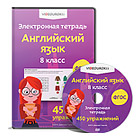
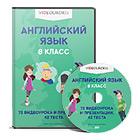
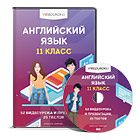

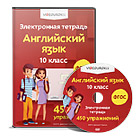
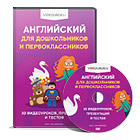
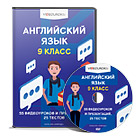
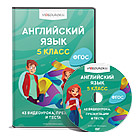
 Сравнительный анализ стихотворения “Rock A Bye Baby” и его поэтических переводов на русский язык (на материале произведений О. Седаковой и С.Я. Маршака (59.89 KB)
Сравнительный анализ стихотворения “Rock A Bye Baby” и его поэтических переводов на русский язык (на материале произведений О. Седаковой и С.Я. Маршака (59.89 KB)
 0
0 164
164 0
0 Нравится
0
Нравится
0





